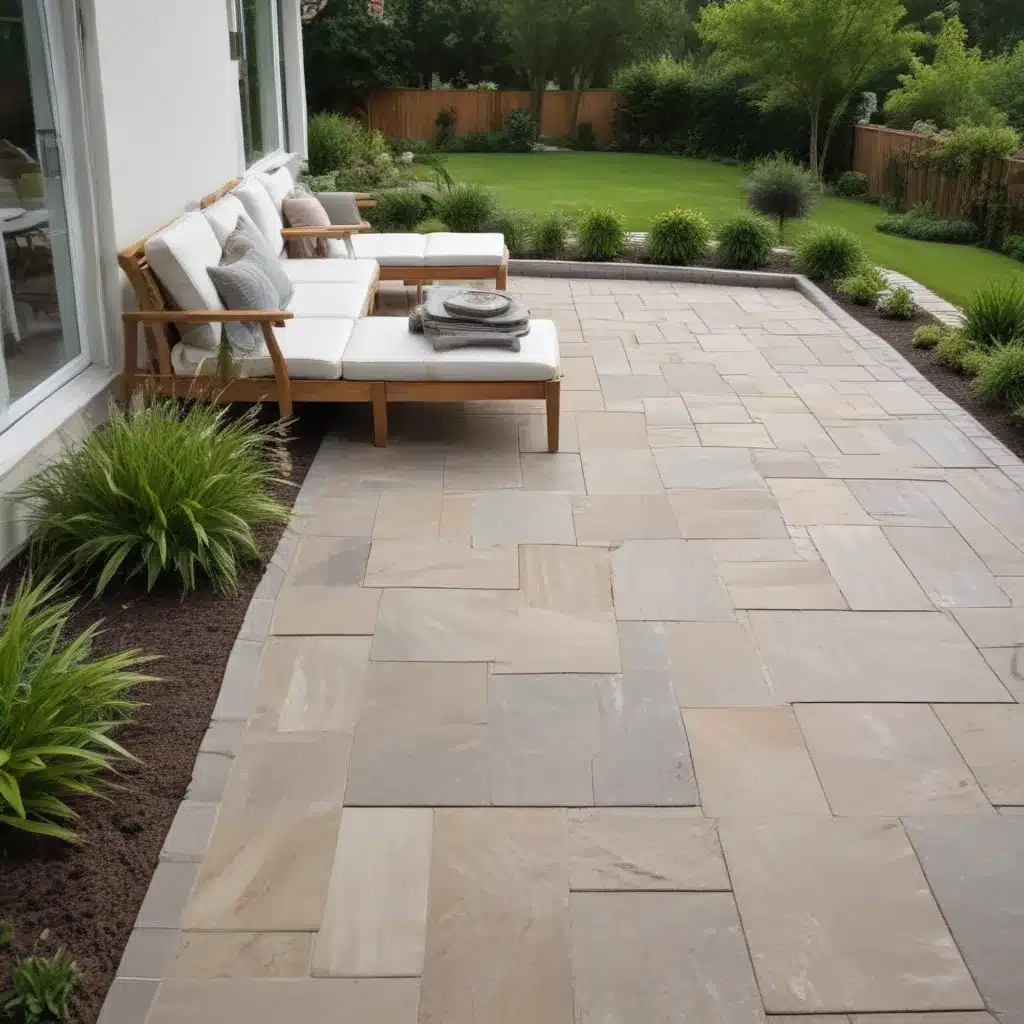
Extend Your Living Space with These Inviting Patio Paving Design Ideas
Are you dreaming of a backyard retreat where you can unwind, entertain, and bask in the beauty of the outdoors? One of the most transformative and aesthetically pleasing ways to enhance your outdoor space is by incorporating paving stones and slabs into your landscape design. From creating inviting patios to defining functional areas, these versatile materials can completely revitalize your backyard oasis.
Trending Patio Paving Materials
Outdoor Tile and Stone: Natural stone options like travertine, bluestone, and flagstone offer a timeless, high-end look that can instantly elevate your patio’s aesthetic. Porcelain tiles designed for outdoor use also provide a sleek, modern alternative with superior durability.
Concrete Pavers: Interlocking concrete pavers in a variety of shapes, sizes, and colors allow for endless design possibilities. From classic rectangular styles to unique shapes like hexagons or cobblestones, concrete pavers can create truly custom patio looks.
Brick and Natural Stone: The warm, rustic appeal of brick and natural stone like limestone or slate makes them perennial favorites for patio paving. These materials blend seamlessly with traditional architectural styles and lush landscaping.
Patio Paving Patterns and Layouts
Geometric Designs: Arranging pavers in geometric patterns like herringbone, basketweave, or chevron can add visual interest and a sense of sophistication to your patio. These layouts also work well for defining specific zones or activity areas.
Herringbone Patterns: The classic herringbone pattern, with its intersecting diagonal lines, creates a dynamic and visually engaging patio surface. It’s a popular choice that works beautifully with both modern and traditional design aesthetics.
Circular and Curved Layouts: Incorporating circular or curved patio shapes can soften the overall look and make the space feel more inviting. These layouts are particularly well-suited for smaller patios or areas with unique architectural features.
Patio Paving Color Schemes
Neutral Tones: Earthy neutrals like beige, gray, and tan offer a timeless, versatile foundation for your patio design. These classic hues provide a sophisticated backdrop that allows your outdoor furnishings and landscaping to take center stage.
Vibrant Colors: For a more bold and eye-catching patio, consider vibrant paving options in shades of red, blue, green, or even multicolored blends. These can make a strong design statement and infuse your outdoor living space with personality.
Complementary Hues: Pairing complementary colors, such as warm and cool tones or analogous shades, can create a visually harmonious and dynamic patio design. This approach allows you to incorporate multiple paving materials while maintaining a cohesive aesthetic.
Outdoor Living Space Design
Creating Cozy Seating Areas: Arrange comfortable outdoor furniture, such as plush sofas, armchairs, and coffee tables, to form intimate seating areas that encourage relaxation and conversation. Incorporate shade structures like pergolas or umbrellas to provide relief from the sun.
Incorporating Greenery and Landscaping: Surround your patio with lush plantings, including potted plants, flower beds, and low-growing shrubs. These elements help to soften the hardscape and create a more naturalistic, inviting atmosphere. Consider adding landscaping borders or edging to delineate the patio space.
Enhancing with Outdoor Accessories: Accessorize your patio with decorative pillows, outdoor rugs, and weatherproof artwork or sculptures. Strategically placed lanterns, fire pits, or water features can also add ambiance and functionality to your outdoor living space.
Patio Paving Installation Techniques
Preparing the Patio Base: Begin by excavating the area and grading the soil to ensure proper drainage. Compact the soil, then lay a base of crushed gravel or stone to create a stable, level foundation for your paving.
Paving Installation Methods: For a secure and long-lasting patio, consider a mortar-set installation, where the pavers are adhered to a concrete or mortar bed. Alternatively, a dry-lay method using sand and gravel can provide a more flexible, permeable surface. Proper edge restraints are crucial for maintaining the patio’s structural integrity.
Specialty Paving Installations: For enhanced sustainability and stormwater management, explore permeable paving options that allow water to infiltrate through the surface. Heated paving systems can also be integrated into your patio design, providing a snow and ice-free surface during the winter months.
Patio Paving Maintenance and Upkeep
Cleaning and Sealing: Regularly power wash your patio to remove dirt, debris, and stains. Replenish joint sand as needed to keep the pavers stable and secure. Applying a high-quality sealer can help protect the paving materials and enhance their appearance.
Repairing and Replacing: Address any cracks, chips, or uneven pavers promptly to maintain the patio’s structural integrity and aesthetic appeal. Damaged or worn pavers can often be selectively replaced without disrupting the entire surface.
Winterizing the Patio: Properly preparing your patio for the winter months is essential. Remove snow and ice buildup using a snow shovel or de-icing products designed for paving materials. Protect the paving surface from harsh winter conditions to prevent damage and ensure a smooth transition into the spring.
Cost Considerations for Patio Paving
Budget-Friendly Paving Options: Concrete pavers and interlocking paving stones can provide an attractive and durable patio solution at a more affordable price point. Explore natural stone alternatives, such as manufactured concrete slabs or stamped concrete, to achieve the look of premium materials without the higher cost.
Premium Paving Upgrades: For a truly luxurious outdoor living space, consider upgrading to high-end natural stone options like travertine, bluestone, or premium brick. Heated paving systems and intricate paving patterns can also add significant value and functionality to your patio.
Professional Installation Costs: When budgeting for your patio project, factor in the cost of professional installation, including labor, permits, and any necessary site preparation or landscaping work. The scope and size of your patio will also impact the overall investment.
By exploring these patio paving design ideas and installation techniques, you can transform your backyard into a truly inviting and functional outdoor living space that seamlessly blends with your home’s architecture and landscape. For expert guidance on your patio paving project, visit Cincinnati Patiopaving to get started.

